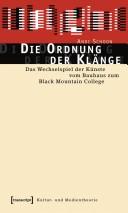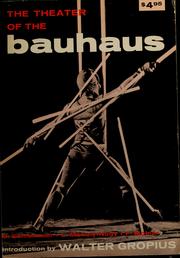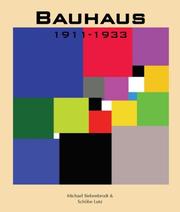| Listing 1 - 10 of 10 |
Sort by
|
Book
ISBN: 128219724X 9786612197246 3484970413 9783484970410 3484810351 9783484810358 Year: 2008 Publisher: Tübingen Niemeyer
Abstract | Keywords | Export | Availability | Bookmark
 Loading...
Loading...Choose an application
- Reference Manager
- EndNote
- RefWorks (Direct export to RefWorks)
The 18th century was also known as the Pedagogical Century. In 1774, Dessau saw philanthropists founding the first reformed school dedicated to the principles of the Enlightenment. The philanthropists revolutionised teaching by designing a child-centred learning strategy. They no longer wished to impart the learning of scholars but to provide practical vocational knowledge for future citizens. All subsequent movements for educational reform in Germany referred to this first comprehensive experimental school developed by the educationalists of the German Enlightenment.
Education --- Philanthropinism --- Children --- Education, Primitive --- Education of children --- Human resource development --- Instruction --- Pedagogy --- Schooling --- Students --- Youth --- Civilization --- Learning and scholarship --- Mental discipline --- Schools --- Teaching --- Training --- History --- Philanthropinum Dessau --- Dessau (Dessau, Germany) --- Dessau (Halle, Germany) --- Dessau --- Dessau-Rosslau (Germany)
Book
ISBN: 3839411041 3837611043 Year: 2015 Publisher: Bielefeld transcript Verlag
Abstract | Keywords | Export | Availability | Bookmark
 Loading...
Loading...Choose an application
- Reference Manager
- EndNote
- RefWorks (Direct export to RefWorks)
Was bedeutet uns »das Bauhaus« heute - im Nachspann der Postmoderne unter den Bedingungen von Globalisierung, weltweitem Daten- und Kapitalaustausch, medialer Vernetzung, Umkodierung von Nationalgrenzen, Weltmigration und ebensolchen planetarischen Entwicklungen, die sich in der Gründungszeit der modernen Weltbaubewegung gerade erst abzuzeichnen begannen? Der Band inszeniert »das Bauhaus« als eine Doppelfigur, die der Immobilie, dem Haus, der Bleibe und dem Bauen ebenso verpflichtet ist wie der Mobilität, dem Reisen, dem Exil und der Heimatlosigkeit, wofür die Figur eines Schiffes namens »Bauhaus« steht. »Die Zeiten der klaren Distinktion zwischen dem eigenen und dem Fremden sind kulturgeschichtlich wie philosophisch perdu. Die Umdeutung von ›dem Bauhaus‹ zu ›der Bauhaus‹ hat sich gelohnt.« Christian Holl, deutsche bauzeitung, 10 (2009)
Architecture --- Art, Architecture & Applied Arts --- Aesthetics. --- Architecture. --- Art History of the 20th Century. --- Media Aesthetics. --- Media. --- Bauhaus; Kulturphilosophie; Medien; Architekturgeschichte; Architektur; Ästhetik; Kunstgeschichte des 20. Jahrhunderts; Medienästhetik; Philosophy of Culture; Media; Architecture; Aesthetics; Art History of the 20th Century; Media Aesthetics --- Bauhaus. --- Bauhaus --- Influence. --- Staatliches Bauhaus --- Baohaosi --- Bauhaus Dessau

ISBN: 3839404509 3899424506 Year: 2015 Publisher: Bielefeld transcript Verlag
Abstract | Keywords | Export | Availability | Bookmark
 Loading...
Loading...Choose an application
- Reference Manager
- EndNote
- RefWorks (Direct export to RefWorks)
Das Bauhaus wurde 1919 von dem Architekten Walter Gropius gegründet. Die Hochschule für Gestaltung war ein Spiegel ihrer Zeit, aber auch eine »Brutstätte« neuer Ideen. Probleme und Lösungsansätze, welche die gesamte Kunstwelt bewegten, wurden am Bauhaus von Paul Klee, Wassily Kandinsky, László Moholy-Nagy und anderen aufgenommen und weitergeführt. Zu den wichtigsten Anliegen der Bauhaus-Jahre gehörte die Suche nach einer Verbindung der Künste. Synästhetische Verknüpfungen von Farben und Klängen gehörten ebenso zu den gängigen Methoden wie der Versuch, der Malerei eine zeitliche Ebene zu geben, die als musikalisch verstanden wurde. Die Musik diente als Ordnung schaffendes Prinzip. Das Black Mountain College (1933-1957) entwickelte die Visionen des Bauhauses nach dessen Schließung weiter: Die Konzepte der europäischen Moderne erlebten - etwa durch Josef Albers und John Cage - eine neue Deutung unter amerikanischen Bedingungen. Diese Studie zeigt das Bauhaus und das Black Mountain College als Laboratorien zur Erarbeitung interdisziplinärer Fragestellungen, die die wechselhaften Verhältnisse zwischen den Künsten im 20. Jahrhundert prägten - und bis in die zeitgenössische Klanglandschaft nachwirken.
Media studies --- Architecture. --- Art History of the 20th Century. --- Arts. --- Media Aesthetics. --- Music. --- Musicology. --- Bauhaus; Black Mountain College; Interdisziplinarität; Medienkunst; Performance; Kunst; Musik; Architektur; Kunstgeschichte des 20. Jahrhunderts; Musikwissenschaft; Medienästhetik; Media Art; Arts; Music; Architecture; Art History of the 20th Century; Musicology; Media Aesthetics --- Bauhaus. --- Black Mountain College (Black Mountain, N.C.) --- History. --- Staatliches Bauhaus --- Baohaosi --- Bauhaus Dessau

ISBN: 0819575410 9780819575418 9780819560209 0819560200 Year: 1961 Publisher: Middleton, Connecticut
Abstract | Keywords | Export | Availability | Bookmark
 Loading...
Loading...Choose an application
- Reference Manager
- EndNote
- RefWorks (Direct export to RefWorks)
Few creative movements have been more influential than the Bauhaus, under the leadership of Walter Gropius. The art of the theater commanded special attention. The text in this volume is a loose collection of essays by Oskar Schlemmer, Laszlo Moholy-Nagy, and Farkas Molnár (who in an illustrated essay shares his vision of a total theatre space), with an introduction by Bauhaus leader Walter Gropius. Originally published in German in 1924, Die Bühne im Bauhaus was translated by A. S. Wensinger and published by Wesleyan in 1961. It was prepared with the full cooperation of Walter Gropius and his introduction was written specially for this edition. From Bauhaus experiments there emerged a new aesthetic of stage design and presentation, a new concept of "total theater." Its principles and practices, revolutionary in their time and far in advance of all but the most experimental stagecraft today, were largely the work of Oskar Schlemmer, Laszlo Moholy-Nagy, and their students. Profusely illustrated and startling in its typography (the work of Moholy-Nagy), the 1924 volume quickly became a collector's item and is now virtually unobtainable. Those interested in the stage, the modern visual arts, or in the bold steps of the men of genius who broadened the horizons of aesthetic experience will appreciate that this translation is available again.
Costume. --- Theaters --- Fancy dress --- Motion pictures --- Opera --- Stage costume --- Theater --- Theatrical costume --- Decorative arts --- Clothing and dress --- Art and theater --- Design, Theatrical --- Scenery (Stage) --- Scenography --- Setting (Stage) --- Stage guides --- Stage scenery --- Stage-setting --- Staging --- Theatrical scenery --- Theater in art --- Scene painting --- Stage-setting and scenery. --- Costume --- Models --- Sound effects --- Bauhaus. --- Staatliches Bauhaus --- Baohaosi --- Bauhaus Dessau --- Set designers
Book
ISBN: 1283953897 1780425163 9781780425160 Year: 2012 Publisher: New York : Parkstone International,
Abstract | Keywords | Export | Availability | Bookmark
 Loading...
Loading...Choose an application
- Reference Manager
- EndNote
- RefWorks (Direct export to RefWorks)
Das Bauhaus war eine der bedeutsamsten und folgenreichstenkulturellen Erscheinungen des 20. Jahrhunderts. Es wurde alseine Hochschule für Kunst und Gestaltung 1919 in Weimarvon Walter Gropius gegründet. Seine Wirkungsstätten warenWeimar 1919-1925, Dessau 1925-1932 und Berlin 1932/1933.Ihre Gestaltungslehren finden bis heute Beachtung inrenommierten Architektur- und Kunstausbildungsstätten aberauch im allgemeinbildenden Kunsterziehungsunterricht.Produkte des Bauhauses - so die berühmten Stahlrohrmöbelvon Marcel Breuer - avancierten zu wohlfeil angebotenenDesignklassikern. Bauten des Bauhauses h
Art, German --- Art, Modern --- ABR-Stuttgart (Group of artists) --- Bewegung Nurr (Group of artists) --- Blaue Reiter (Group of artists) --- Blaue Vier (Group of artists) --- Die Sieben (Group of artists) --- Ellipse (Group of artists) --- Gruppe Kranich (Group of artists) --- Künstlergruppe Chemnitz --- Neben E1N Ander (Group of artists) --- Pathetiker (Group of artists) --- Bauhaus --- Staatliches Bauhaus --- Baohaosi --- Bauhaus Dessau --- History. --- Bauhaus.

ISBN: 128395396X 1780429304 9781780429304 9781859956267 1859956262 9781859956243 1859956246 9781780425160 1780425163 Year: 2009 Publisher: New York, USA
Abstract | Keywords | Export | Availability | Bookmark
 Loading...
Loading...Choose an application
- Reference Manager
- EndNote
- RefWorks (Direct export to RefWorks)
The Bauhaus movement (meaning the "house of building") developed in three German cities - it began in Weimar between 1919 and 1925, then continued in Dessau, from 1925 to 1932, and finally ended in 1932-1933 in Berlin. Three leaders presided over the growth of the movement: Walter Gropius, from 1919 to 1928, Hannes Meyer, from 1928 to 1930, and Ludwig Mies van der Rohe, from 1930 to 1933. Founded by Gropius in the rather conservative city of Weimar, the new capital of Germany, which had just been defeated by the other European nations in the First World War, the movement became a flamboyant re
Art, German --- Design --- Art, Modern --- ABR-Stuttgart (Group of artists) --- Bewegung Nurr (Group of artists) --- Blaue Reiter (Group of artists) --- Blaue Vier (Group of artists) --- Die Sieben (Group of artists) --- Ellipse (Group of artists) --- Gruppe Kranich (Group of artists) --- Künstlergruppe Chemnitz --- Neben E1N Ander (Group of artists) --- Pathetiker (Group of artists) --- History --- Bauhaus. --- Bauhaus --- Staatliches Bauhaus --- Baohaosi --- Bauhaus Dessau --- History.
Book
ISBN: 1283956780 1780428715 9781780428710 9781783108664 1783108665 Year: 2012 Publisher: New York : Parkstone International,
Abstract | Keywords | Export | Availability | Bookmark
 Loading...
Loading...Choose an application
- Reference Manager
- EndNote
- RefWorks (Direct export to RefWorks)
Le Bauhaus est une des émergences culturelles les plus importantes et conséquentes du siècle. Walter Gropius fonda cet institut de design en 1919, à Weimar. L'école fut effective à Weimar, Dessau et Berlin. Les enseignements du Bauhaus en design sont aujourd'hui encore respectée dans les écoles de design et d'architecture. Les produits du Bauhaus sont devenus des standards du design et les immeubles du Bauhaus sont entrés dans l'histoire et au patrimoine culturel mondial de l'UNESCO. Ce livre, richement illustré et documenté, offre une vue globale de l'histoire du Bauhaus et projette un nouvel
Architecture --- Art --- Women artists --- Artists, Women --- Women as artists --- Artists --- Art, Occidental --- Art, Visual --- Art, Western (Western countries) --- Arts, Fine --- Arts, Visual --- Fine arts --- Iconography --- Occidental art --- Visual arts --- Western art (Western countries) --- Arts --- Aesthetics --- History --- Study and teaching --- Bauhaus. --- Staatliches Bauhaus --- Baohaosi --- Bauhaus Dessau --- Art, Primitive
Book
ISBN: 9780472121946 0472121944 9780472900596 0472900595 9780472119905 0472119907 Year: 2016 Publisher: Ann Arbor University of Michigan Press
Abstract | Keywords | Export | Availability | Bookmark
 Loading...
Loading...Choose an application
- Reference Manager
- EndNote
- RefWorks (Direct export to RefWorks)
"The Breslau arts scene during the Weimar period was one of the most vibrant in all of Germany, yet it has disappeared from memory and historiography. Breslau was a key center for innovative artistic production during the Weimar Republic; recovery of its history will shed new light on German cultural dynamics in the 1920s. Such a study has art historical significance because of the incredible extent of innovation that occurred in almost every intellectual field, advances that formed the basis for aesthetic modernism internationally and continue to affect the course of visual art and architecture today. Architecture education, just one example in many, is still largely based on a combination of the Bauhaus model from the 1920s and the model developed at the Breslau Academy of Fine and Applied Art. The exploratory attitude encouraged in Weimar era arts endeavors, as opposed to the conformism of academic art, is still a core value promoted in contemporary art and architecture circles. Given the long-lasting influence of Weimar culture on modernism one would expect to find a spate of studies examining every aspect of its cultural production, but this is not the case. Recent scholarship is almost exclusively focused on Berlin and the Dessau Bauhaus. Although both interests are understandable, the creative explosion was not confined to these cities but was part of a larger cultural ethos that extended into many of the smaller regional centers. The Expressionist associations the Blaue Reiter in Munich and Brücke in Dresden are two well-known examples. Equally, innovation was not confined to a few monumental projects like the Stuttgart Weissenhofsiedlung but part of a broader national cultural ethos. The dispersion of modernism occurred partly because of the political history of Germany as a loosely joined confederation of small city states and principalities that had strong individual cultural identities before unification in 1871 but also because of the German propensity to value and take intense pride in the Heimat, understood both as the hometown and the region. Heimatliebe translated into generous support for cultural institutions in outlying cities. Host to a roster of internationally acclaimed artists and architects, major collectors, arts organizations, museums, presses, galleries, and one of the premier German arts academies of the day, Breslau boasted a thriving modern arts scene until 1933 when the Nazis began their assault on so-called 'degenerate' art. This book charts the cultural production of Breslau-based artists, architects, art collectors, urban designers, and arts educators, who were especially interesting because they operated in the space between the margins of Weimar-era cultural debates. Rather than accepting the radical position of the German avant-garde or the reactionary position of German conservatives, many Breslauers sought a middle ground. It is the first book in English to address this history and presents the history in a manner unique to any studies currently on the market. Beyond the Bauhaus explores the polyvalent and contradictory nature of cultural production in Breslau in order to expand the cultural and geographic scope of Weimar history; the book asserts a reciprocal dimension to the relationship between regional culture and national culture, between centers like Breslau and the capital Berlin. With major international figures like the painters Otto Mueller and Oskar Moll, architects Hans Scharoun and Adolf Rading, urban planners Max Berg and Ernst May, collectors Ismar Littmann and Max Silberberg, and an art academy that by 1929 was considered the best in Germany, Breslau clearly had significance to narratives of Weimar cultural production. Beyond the Bauhaus contributes the history of German culture during the Weimar Republic. It belongs alongside histories of art, architecture, urban design, exhibition, collecting, and culture; histories of the Bauhaus; histories of arts education more broadly; and German history. The readership would include those interested in German history; German art, architecture, urban design, planning, collecting, and exhibition history; in the avant-garde; the development of arts academies and arts pedagogy; and the history of Breslau and Silesia"--From Google Books.
City and town life --- Arts, German --- Modernism (Aesthetics) --- Aesthetics --- German arts --- City life --- Town life --- Urban life --- Sociology, Urban --- History --- Bauhaus --- Staatliches Bauhaus --- Baohaosi --- Bauhaus Dessau --- Influence --- History. --- Germany --- Wrocław (Poland) --- Breslau (Germany) --- Wroslaw (Poland) --- Vrotslav (Poland) --- Weimar Republic, Germany, 1918-1933 --- Intellectual life --- Civilization

ISBN: 1858660122 9633861489 2821815026 9633860024 0585340676 9780585340676 9781858660122 9789633861486 9789633860021 9789633860083 9633860083 9780585340678 9637770208 9789637770203 9781858660127 1858660130 9781858660134 9633864968 9782821815025 Year: 2022 Publisher: Budapest New York
Abstract | Keywords | Export | Availability | Bookmark
 Loading...
Loading...Choose an application
- Reference Manager
- EndNote
- RefWorks (Direct export to RefWorks)
"In this highly original book. Hungarian art historian Eva Forgacs examines the development of the Bauhaus school of architecture and applied design by focusing on the idea of the Bauhaus, rather than on its artefacts. What gave this idea its extraordinary powers of survival?" "Founded in 1919, with the architect Walter Gropius as its first director, the Bauhaus carried within it the seeds of conflict from the start. The duration of the Bauhaus coincides very nearly with that of the Weimar Republic; the Bauhaus idea - the notion that the artist should be involved in the technological innovations of mechanization and mass production - is a concept that was bound to arouse the most passionate feelings. It is these two strands - personal and political - that Forgacs so cleverly interweaves." "The text has been extensively revised since its original publication in Hungarian, and an entirely new chapter has been added on the Bauhaus's Russian analogue, VkhUTEMAS, the Moscow academy of industrial art."--Jacket.
Bauhaus ideologie --- 7.037 --- Kunstgeschiedenis 1900 - 1950 --- Macaristan --- Vengerskai︠a︡ Narodnai︠a︡ Respublika --- Magyar Népköztársaság --- Ungern --- Magyar Tanácsköztársaság --- Hungarian Republic --- Magyar Köztársaság (Republic) --- Oungaria --- Unkari --- Ungaria --- Ungheria --- Hungría --- Magyarország (Republic) --- Maďarsko --- Węgry --- Vengrii︠a︡ --- VNR --- V.N.R. --- Hungaryah --- Hungari --- Hŏnggari --- Ungarii︠a︡ --- Republic of Hungary --- Hongaria --- Hongarye --- Republiek van Hongarye --- Macarıstan Respublikası --- Венгрыя --- Venhryi︠a︡ --- Mađarska --- Republika Mađarska --- Унгария --- Унгарската република --- Ungarskata republika --- Hongria --- República d'Hongria --- Republikang Unggaro --- Unggriya --- Mad̕arská republika --- Republica Ungrese --- Hwngari --- Gweriniaeth Hwngari --- Republik Ungarn --- Ungari --- Ungari Vabariik --- Ουγγαρία --- Δημοκρατία της Ουγγαρίας --- Dēmokratia tēs Oungarias --- República de Hungría --- Hungario --- Hungarujo --- Hungara Respubliko --- Hungaria --- Hungariar Errepublika --- Hungariako Errepublika --- Tjóðveldið Ungarn --- République de Hongrie --- Ungáir --- Poblacht na hUngáire --- Ungaar --- Pobblaght ny h-Ungaar --- 헝가리 --- Hunakalia --- Republik Hongaria --- Ungverjaland --- Lýðveldið Ungverjaland --- הונגריה --- אונגארן --- Мажарстан --- Mazharstan --- Мажарстан Республикасы --- Mazharstan Respublikasy --- Венгрия --- Венгрия Республикасы --- Vengrii︠a︡ Respublikasy --- Jamhuri ya Hungaria --- Madjaristan --- Repúvlika de Madjaristan --- רפובליקא דא מאגיאדיסטאן --- מאגיאדיסטאן --- Маджар --- Madzhar --- Маджар Республика --- Madzhar Respublika --- Respublica Hungarica --- Ungārija --- Ungārijas Republika --- Vengrija --- Vengrijos respublika --- Ungaïa --- Ungri --- Унгарија --- Република Унгарија --- Republika Ungarija --- Ungerija --- Hanekeria --- Унгар --- Ungar --- Tlācatlahtohcāyōtl Hungria --- Hongaarse Republiek --- ハンガリー --- Hangarī --- Hungrii --- Republikken Ungarn --- Ongria --- Republica d'Ongria --- Vengriya --- Vengriya Respublikasi --- Republika Węgierska --- República da Hungria --- Republica Ungară --- Republica Ungaria --- Венгерская Республика --- Vengerskai︠a︡ Respublika --- Lepulika o Hungary --- Republika e Hungarisë --- Unghirìa --- Madžarska --- Republika Madžarska --- Madźary --- Мађарска --- Република Мађарска --- Unkarin tasavalta --- Republiken Ungern --- Unggarya --- Republika ng Unggarya --- Majarstan Jȯmḣu̇rii︠a︡te --- Majoriston --- Macaristan Cumhuriyeti --- Угорщина --- Uhorshchyna --- Мадярщина --- Madi︠a︡rshchyna --- Угорська Республіка --- Uhorsʹka Respublika --- Oгорська Республіка --- Ohorsʹka Respublika --- Ongiri --- Oonguri --- Republik bu Oonguri --- Honharije --- Vengrėjė --- Vengrėjės Respoblėka --- 匈牙利 --- Xiongyali --- 匈牙利共和國 --- Xiongyali gong he guo --- Xiongyali Gongheguo --- Bauhaus ; ideologie --- Kunstgeschiedenis ; 1900 - 1950 --- Bauhaus --- Berlin (Germany). --- Dessau (Dessau, Germany). --- Weimar (Thuringia, Germany). --- Baohaosi --- Bauhaus Dessau --- History. --- Jews --- Hebrews --- Israelites --- Jewish people --- Jewry --- Judaic people --- Judaists --- Ethnology --- Religious adherents --- Semites --- Judaism --- History --- Social life and customs --- Social conditions --- Hungary --- Ungarn --- Hongrie --- Hongarije --- Austro-Hungarian Monarchy --- Ethnic relations --- Staatliches Bauhaus --- Bauhaus - History. --- E-books --- Magyar Republic --- Ongaria --- Ethnic relations, Photography, Social conditions, Social life and customs, Jews. --- ART / History / Modern (late 19th Century to 1945). --- Weimar, Hannes Meyer, Dessau, Germany, Moscow. --- BNUU --- БНУУ --- Bu̇gd Naĭramdakh Ungar Uls
Book
ISBN: 3035617309 3035617430 9783035617436 9783035617283 3035617287 9783035617276 3035617279 Year: 2019 Publisher: Basel
Abstract | Keywords | Export | Availability | Bookmark
 Loading...
Loading...Choose an application
- Reference Manager
- EndNote
- RefWorks (Direct export to RefWorks)
As founder of the Bauhaus school, Walter Gropius (1883-1969) is one of the icons of 20the century architecture. While his early buildings in Pomerania were still strongly marked by his teacher Peter Behrens, after an expressionistic phase focused on handicraft, he ultimately arrived at geometric abstraction. During the entire period he collaborated with other architects, founding the collective known as "The Architects Collaborative" in the US. The comprehensive monograph documents all 74 of the known buildings by Gropius that were realized, including many early works which he never publicized; but it also critically examines his unbuilt projects. The book is illustrated with new photographs by the author, historical figures, and with as new plans drawn by the author. Das architektonische Schaffen des Bauhaus-Begründers
Architektur. --- Bauhaus. --- Gropius. --- Moderne. --- ARCHITECTURE / Individual Architects & Firms / General. --- Gropius, Walter, --- Criticism and interpretation. --- Architects --- Architecture, Modern --- Architect-designed houses --- 72.07 --- Gropius, Walter 1883-1969 (°Berlijn, Duitsland) --- Architectuur ; 20ste eeuw ; Bauhaus ; W. Gropius --- Custom-designed houses --- Houses, Architect-designed --- Dwellings --- Architecture --- Professional employees --- Architecten. Stedenbouwkundigen A - Z --- History --- Staatliches Bauhaus --- Baohaosi --- Bauhaus Dessau --- Bauhaus --- Gropius, Walter --- Gropius, Walter, - 1883-1969 --- 1900-1999 --- Germany. --- Alemania --- Ashkenaz --- BRD --- Bu̇gd Naĭramdakh German Uls --- Bundesrepublik Deutschland --- Deguo --- Deutsches Reich --- Deutschland --- Doitsu --- Doitsu Renpō Kyōwakoku --- Federal Republic of Germany --- Federalʹna Respublika Nimechchyny --- FRN --- Gėrman --- German Uls --- Germania --- Germanii︠a︡ --- Germanyah --- Gjermani --- Grossdeutsches Reich --- Jirmānīya --- KhBNGU --- Kholboony Bu̇gd Naĭramdakh German Uls --- Nimechchyna --- Repoblika Federalin'i Alemana --- República de Alemania --- República Federal de Alemania --- Republika Federal Alemmana --- Vācijā --- Veĭmarskai︠a︡ Respublika --- Weimar Republic --- Weimarer Republik --- Germany (East) --- Germany (West) --- Europe
| Listing 1 - 10 of 10 |
Sort by
|

 Search
Search Feedback
Feedback About UniCat
About UniCat  Help
Help News
News